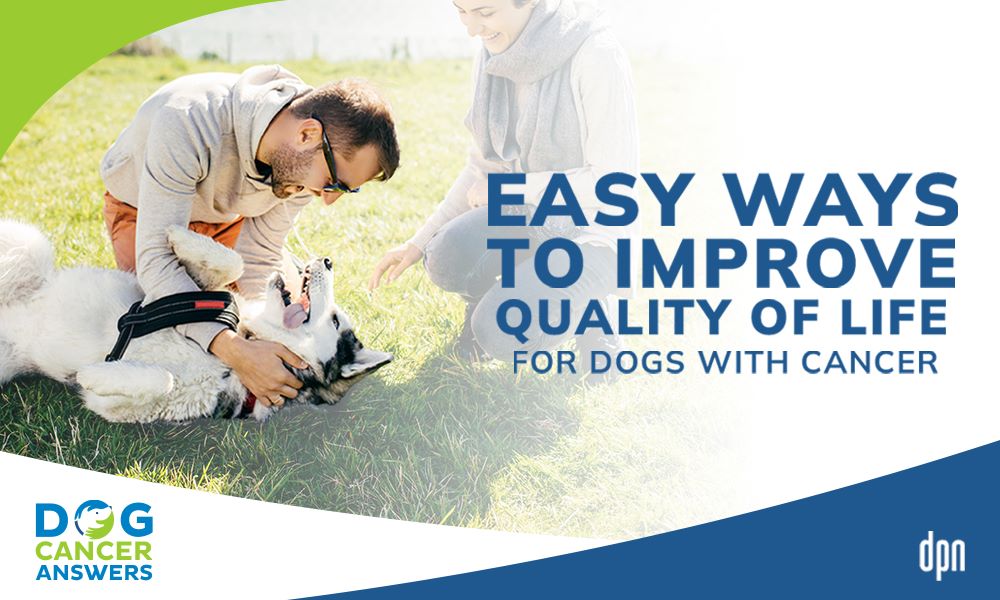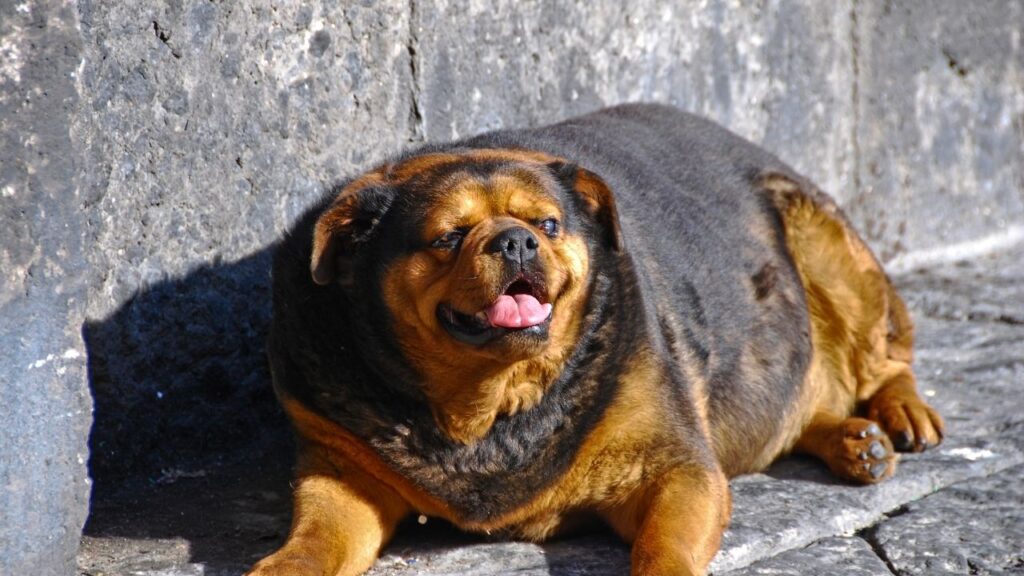Sunlight is usually perfectly safe for your dog (and even beneficial for dogs with cancer!), but certain dogs are at risk for sun damage.
Key Takeaways
- Sunshine is good for dogs; it helps them maintain a normal circadian rhythm and promotes overall health and well-being.
- Allow plenty of time outside in the sun for dogs. Plan on longer walks in the morning or evening, and just spend a few minutes outside during the peak of day.
- Dogs are at increased risk of sun-related cancers if they have light-colored skin or thin hair coats.
- Sun exposure can cause squamous cell carcinoma and cutaneous hemangiosarcoma in dogs, but not melanoma.
- Dogs don’t need sunlight to make Vitamin D, as they do not convert UV-B radiation to Vitamin D. They get most of their Vitamin D through their diet.
Does Sun Exposure Cause Dog Cancer?
Most people are already aware that sunlight contains ultraviolet (UV) rays, which can be damaging to our skin and cause cancer.1 But is sunshine good for dogs?
UV-B rays in particular are implicated from research in humans.16 When UV-B rays enter a cell, they can damage the DNA within the cell and cause genetic mutations. One common mutation associated with cancer is the inactivation of p53, a tumor suppressor gene.16
The two canine cancers associated with sun exposure are squamous cell carcinoma and cutaneous (skin) hemangiosarcoma.2,3 Melanoma is NOT associated with sunlight in dogs like it is in people.
Dogs’ thick hair protects them from sun damage for the most part.
- Studies have found that sunlight-induced squamous cell carcinoma is most likely to occur on the belly, armpits, groin, ears, nose, and paws, all areas with a thin or nonexistent coat.16
- Dogs with naturally thin coats are at higher risk than dogs with dense coats.16
- Dogs with light-colored skin or thin coats are also more likely to get sunburn than other dogs.2
 Does Sunlight Help a Dog with Cancer?
Does Sunlight Help a Dog with Cancer?
Sun exposure does not always cause cancer in dogs, and in fact, there is some evidence from human studies that it can actually prevent or reduce cancer risk. Let’s explore some of the reasons for why sunshine is good for dogs.
Vitamin D and Sunlight
UV-B absorbed through the skin in humans facilitates the synthesis of vitamin D.10 There is currently very little data from prospective trials (studies designed to directly test the impact of sunlight and vitamin D on cancer risk) in humans, and there are none in dogs. Still, observational studies in humans have linked UV-B and vitamin D to decreased cancer risk in several cancers.4-7
Colorectal cancer has the best evidence for benefit from vitamin D in humans. Vitamin D may help to prevent a variety of other cancers as well, but at this point in time studies have shown mixed results.9,11-13
It also appears that vitamin D may play a “protective role” in human cancer patients, and decrease the risk of dying from cancer.8 The VITAL trial, which evaluated vitamin D and omega-3 fatty acids in 26,000 people over the age of 50, did not find that vitamin D decreased the risk of developing cancer over five years, but did find that people in one of the study groups that received vitamin D were less likely to die of cancer.14 This study cohort is still being followed, so we may learn more in the future.
What does this human research mean for dogs? We aren’t quite sure.
Dogs don’t really convert UV-B radiation to vitamin D like humans2,19, so sunlight exposure may be of no benefit to them in this regard.
Knowing that, you might be tempted to give your dog a vitamin D supplement – but keep in mind that too much vitamin D can cause toxicity, so only give vitamin D supplements under veterinary guidance.18
Sunlight Helps a Dog’s Normal Circadian Rhythm
Sunlight is beneficial to your dog by helping her maintain a normal circadian rhythm. Exposure to sunlight at different times throughout the day helps dogs (and humans) maintain a normal internal clock and sleep cycle. A normal circadian rhythm promotes overall health and well-being.15,17
General Well-Being from Sunlight
In humans, lack of sunlight in the winter can lead to seasonal depression. While we currently have no way to evaluate this in dogs, it is a reasonable possibility that the same is true for some dogs. Allowing your dog to play in the sun year-round may be beneficial to his quality of life.17 (They certainly seem to to think so.)
Dogs at Increased Risk with Sun Exposure
Dogs with pale, light-colored skin are at higher risk of developing sun-induced squamous cell carcinoma or cutaneous hemangiosarcoma. Thin hair coats can also increase risk.2,16
Breeds found to have an increased risk include:2,16
- Beagles
- Bull Terriers
- Dalmatians
- Italian Greyhounds
- Pit Bulls
- Staffordshire Bull Terriers
- Whippets
How to Reduce Sun Exposure Risk
If your dog is at increased risk for sun-related cancers, there are several things that you can do to protect him:
- Limit sun exposure during the midday hours when the sun is at its brightest.
- Apply dog-safe sunscreen to exposed skin, such as the bridge of the nose or belly.
- Have your dog wear a Lycra body suit to protect his skin from sun exposure.
How Much Sun Is Good for My Dog?
You should still allow your dog plenty of outdoor time to enjoy the sun each day, as sunlight promotes a natural circadian rhythm and overall health. A good strategy is to take longer walks in the morning or evening, and just spend a few minutes outside during the peak of day.
Should I Give My Dog Vitamin D?
Vitamin D supplementation is not necessary for most dogs. Dogs get the majority of their vitamin D from their diet, so feeding a complete and balanced diet is the best way to support your dog’s health in this regard. If you are concerned about your dog’s vitamin D levels, consult your veterinarian before giving any supplements, as vitamin D toxicity can lead to kidney failure and death.18
- Pirie CG, Knollinger AM, Thomas CB, Dubielzig RR. Canine Conjunctival Hemangioma and Hemangiosarcoma: A retrospective evaluation of 108 cases (1989-2004). U.S. National Library of Medicine. https://pubmed.ncbi.nlm.nih.gov/16771756/. Published 2006. Accessed December 7, 2022.
- Hohenhaus A. Do Dogs Need Sunscreen? Protecting Your Dog from Solar-induced Tumors. The Animal Medical Center. https://www.amcny.org/blog/2021/09/15/do-dogs-need-sunscreen-protecting-your-dog-from-solar-induced-tumors/. Published September 9, 2021. Accessed December 9, 2022.
- Madewell BR, Conroy JD, Hodgkins EM. Sunlight-skin cancer association in the dog: A report of three cases. Journal of Cutaneous Pathology. 1981;8(6):434-443. doi:10.1111/j.1600-0560.1981.tb01033.x
- Grant WB. Ecologic Studies of solar UV-B radiation and cancer mortality rates. U.S. National Library of Medicine. https://pubmed.ncbi.nlm.nih.gov/12899536/. Published 2003. Accessed December 9, 2022.
- Grant WB, Mohr SB. Ecological studies of ultraviolet B, vitamin D and cancer since 2000. U.S. National Library of Medicine. https://pubmed.ncbi.nlm.nih.gov/19269856/. Published July 2009. Accessed December 9, 2022.
- Grant WB, Boucher BJ. Current impediments to acceptance of the ultraviolet-B-vitamin D-cancer hypothesis. U.S. National Library of Medicine. https://pubmed.ncbi.nlm.nih.gov/19667154/. Published September 2009. Accessed December 9, 2022.
- Grant WB. Lower vitamin-D production from Solar Ultraviolet-B irradiance may explain some differences in cancer survival rates. U.S. National Library of Medicine. https://pubmed.ncbi.nlm.nih.gov/16573299/. Published March 2006. Accessed December 9, 2022.
- Grant WB, Garland CF. The Association of Solar Ultraviolet B (UVB) with reducing risk of cancer: Multifactorial ecologic analysis of geographic variation in age-adjusted cancer mortality rates. U.S. National Library of Medicine. https://pubmed.ncbi.nlm.nih.gov/16886679/. Published 2006. Accessed December 9, 2022.
- Grant WB. How strong is the evidence that solar ultraviolet B and vitamin D reduce the risk of cancer?: An examination using Hill’s criteria for causality. U.S. National Library of Medicine. https://pubmed.ncbi.nlm.nih.gov/20046584/. Published January 2009. Accessed December 9, 2022.
- Samanek AJ, Croager EJ, Gies P, et al. Estimates of beneficial and harmful sun exposure times during the year for major Australian Population Centres. U.S. National Library of Medicine. https://pubmed.ncbi.nlm.nih.gov/16584368/. Published April 2006. Accessed December 9, 2022.
- Cristol H. Myths and Facts about Cancer and Vitamin D. WebMD. https://www.webmd.com/cancer/cancer-vitamin-d-myths-facts. Accessed December 9, 2022.
- Manson JE, Cook NR, Lee IM, et al. Vitamin D Supplements and Prevention of Cancer and Cardiovascular Disease. U.S. National Library of Medicine. https://pubmed.ncbi.nlm.nih.gov/30415629/. Published January 2019. Accessed December 9, 2022.
- Garland CF, Garland FC, Gorham ED, et al. The role of Vitamin D in Cancer Prevention. U.S. National Library of Medicine. https://www.ncbi.nlm.nih.gov/pmc/articles/PMC1470481/. Published February 2006. Accessed December 9, 2022.
- NCI Staff. Vitamin D Supplements Don’t Reduce Cancer Incidence, Trial Shows. National Cancer Institute. https://www.cancer.gov/news-events/cancer-currents-blog/2018/vitamin-d-supplement-cancer-prevention. Published December 13, 2018. Accessed December 9, 2022.
- Bassingthwaighte E. Do Dogs Need Sunlight? Dogs Naturally Magazine. https://www.dogsnaturallymagazine.com/is-your-dog-getting-enough-sunlight/. Published March 2, 2022. Accessed December 9, 2022.
- Vilar-Saavedra, Paulo, and Barbara E. Kitchell. “Sunlight-induced skin cancer in companion animals.” Skin Cancer. Humana Press, New York, NY, 2014. 499-514.
- Flaim D. Walking in Sunshine. Whole Dog Journal. https://www.whole-dog-journal.com/lifestyle/walking-in-sunshine/. Published April 24, 2019. Accessed December 9, 2022.
- Vitamin D Toxicity in Dogs. U.S. Food and Drug Administration. https://www.fda.gov/animal-veterinary/animal-health-literacy/vitamin-d-toxicity-dogs. Published July 7, 2002. Accessed December 9, 2022.
- Chacar FC, Kogika MM, Zafalon RVA, Brunetto MA. Vitamin D Metabolism and Its Role in Mineral and Bone Disorders in Chronic Kidney Disease in Humans, Dogs and Cats. Multidisciplinary Digital Publishing Institute. https://www.mdpi.com/2218-1989/10/12/499. Published December 4, 2020. Accessed December 9, 2022.
Topics
Did You Find This Helpful? Share It with Your Pack!
Use the buttons to share what you learned on social media, download a PDF, print this out, or email it to your veterinarian.







